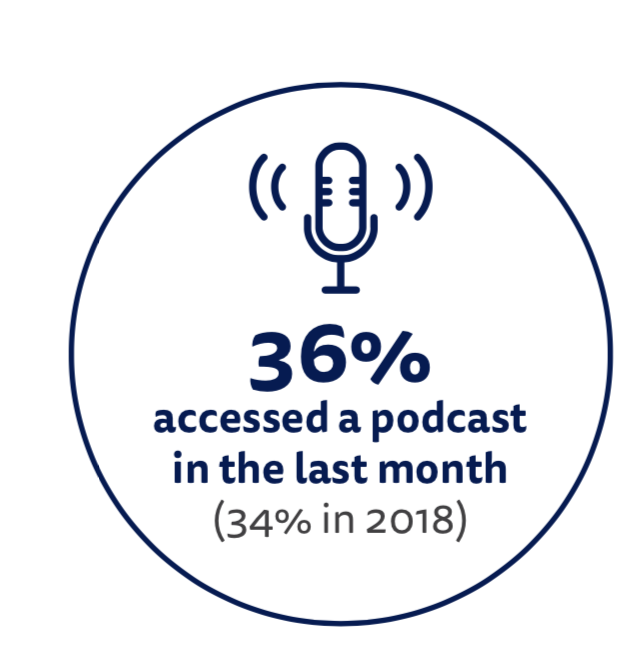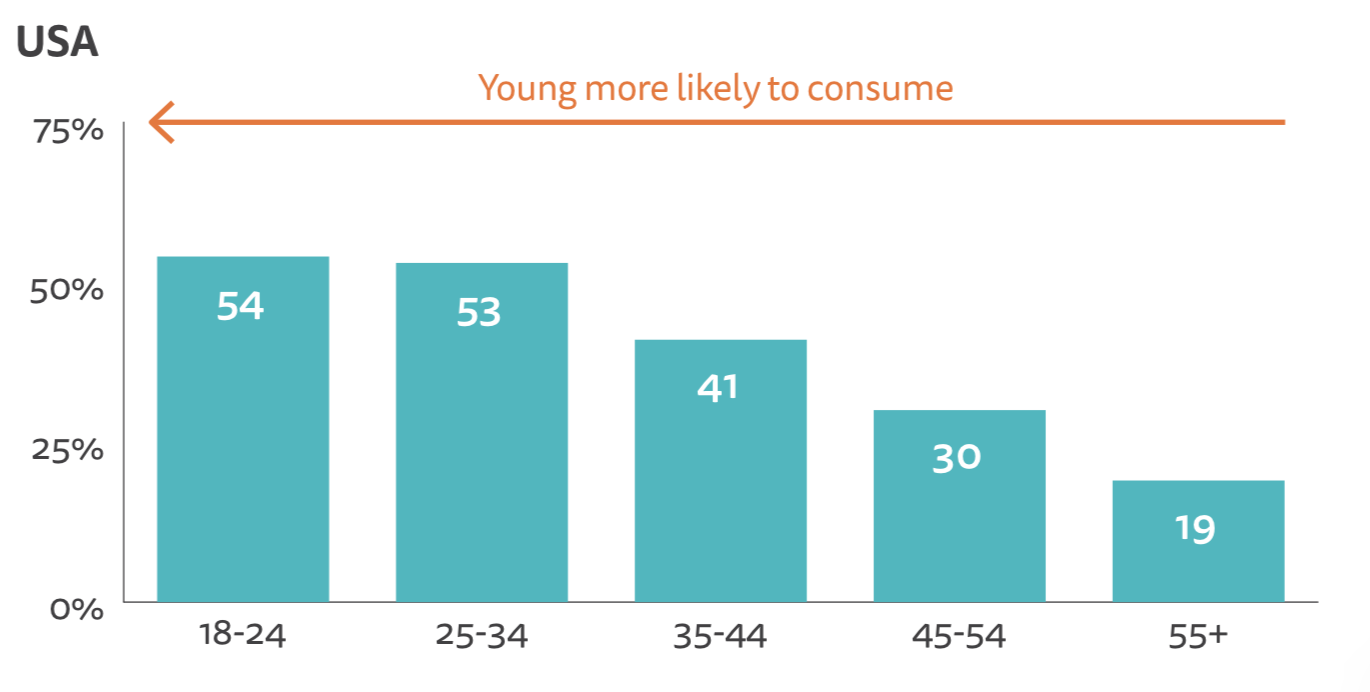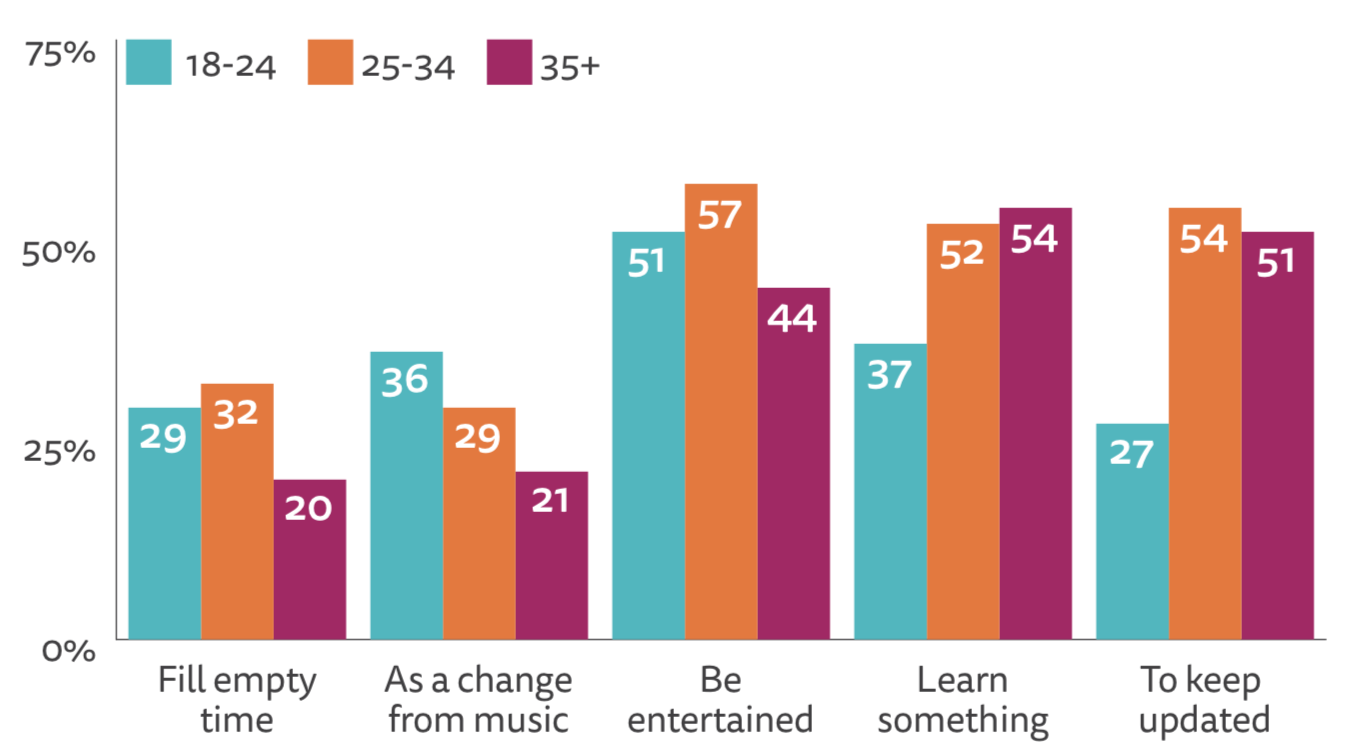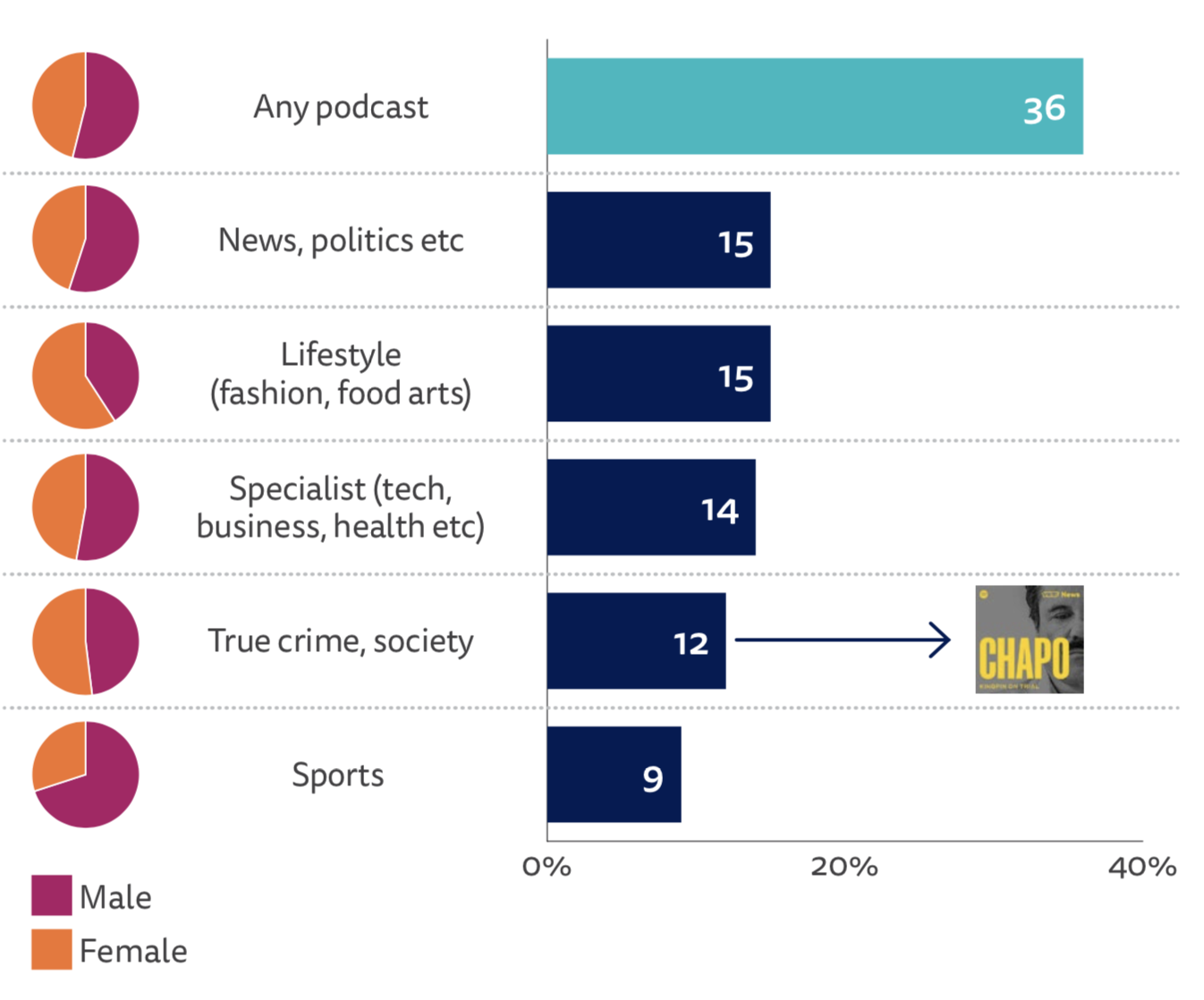
Nic Newman is research associate at Reuters Institute for the Study of Journalism and lead author of the Digital News Report, based on the world’s largest ongoing survey on news consumption.
Podcasts have been around for many years but this episodic digital audio format appears to be reaching critical mass as a consequence of better content and easier distribution. In this year’s Digital News Report, we have been exploring the drivers of podcasts and the motivations for use, particularly with younger people. We have also been looking at the opportunities and risks for publishers.
Over a third of our sample (36 per cent) across 38 countries now say they have listened to a podcast in the last month, with almost one in six (15 per cent) saying they have consumed one about news, politics, or international news. This has grown two percentage points in the last year and three points in the UK.

The Guardian, Washington Post, Politiken, The Economist, and the Financial Times are amongst dozens of publishers to have launched daily news podcasts in the last year. This follows the runaway success of The Daily from the New York Times, which has around 10m monthly listeners, is rebroadcast on public radio, and is about to get a weekly TV spin-off. Meanwhile, the BBC has rebranded its on-demand radio app as BBC Sounds to reflect the shift to on-demand consumption and the growing interest of the podcast generation.

Younger age groups, who spend much of their lives plugged into smartphones, are twice as likely to listen to podcasts than over 55s – and much less likely to listen to traditional speech radio. In the UK, under 35s consume half of all podcasts despite making up around a third of the total adult population – and it is a similar story in the United States.

Why podcasts?
Across all our countries, the main reasons for listening to podcasts are to keep updated about topics of personal interest (46 per cent) and to learn something new (39 per cent). Other motivations include to fill empty time (25 per cent) and as a change from music (22 per cent). But these reasons do not play out equally across age groups.
In the UK specifically, we also see differences between within younger age groups: 18–24s, sometimes referred to as Gen Z, are more likely to be looking for entertainment or for a change from music; 25–34s, often called Gen Y, are also looking to be entertained and fill empty time, but want content that helps them learn and keeps them updated.

Further insights into the motivations of younger podcast listeners came from our in-depth interviews supporting this year’s research. The first relates to convenience. Podcasts are great for multitasking but they also do not require complex interfaces.
Literally, ease. You have it. You’re not actively searching something or reading a screen. You’re letting it wash over you.Chloe, 31-35, UK depth interview
In this sense podcasts bring information to listeners in a way that is effortless, but the linear nature is a welcome break from the usual distractions of digital media. On the other hand, they maintain the element of control and choice that is second nature to millennials and digital natives, but that traditional radio lacks.
\[With\] radio you can’t control what shows are on, whereas podcasts you can.Mark, 31-35, US
Then there is the content itself, which young people feel is often more diverse, more entertaining, and less stuffy than traditional radio. The characters and hosts often bring a more informal style and they tell stories in a more natural and less affected way.
What podcasts?
Given the insights above, it is worth noting that politics and news (15 per cent) is just one part of the content universe. Other popular genres include lifestyle content (15 per cent), true crime (15 per cent), specialist interest (14 per cent), and sports (9 per cent). But many podcasts defy classification with news often discussed in new ways through comedy and celebrity. Young people are listening to podcasts that entertain and inform. This is why many daily podcasts like The Daily from the New York Times use narrative storytelling techniques pioneered in true crime formats such as Serial to add suspense and jeopardy, to keep listeners hooked. Vice and others are applying these techniques to blockbuster documentaries like Chapo, Kingpin on Trial.

How can podcasts benefit publishers?
While many publishers recognise the potential of podcasts, they worry about how they can be monetised.
Podcast advertising revenues are growing but remain just a fraction of the money spent on radio, while some European publishers have invested in creating content only to struggle to find sponsorship.
Others worry about the investment, and skills, required to produce something distinctive and valuable in an already crowded marketplace.
On the other hand, paid content opportunities are emerging with Spotify handing over significant amounts of money for exclusive content. There is speculation that Apple might launch a premium podcast service while start-up Luminary has already launched a similar proposition in the United States.
But many publishers remain wary of platforms and would prefer to build direct relationships. Subscription businesses see potential in using podcasts both to drive loyalty and engagement for existing customers as well as to find new subscribers.
The New York Times and the Economist offer special offers to podcast users while the Guardian has also been experimenting with different ways to ask for donations. The hope is that listeners will be more likely to contribute after engaging for significant periods of time with content that they value. In Denmark, the upmarket Politiken has started to restrict its successful daily news briefing just to subscribers for a number of days each week.

But could the age of innocence be over as money starts to trickle into podcasts? This is certainly bringing more professional content and higher production values, but some fear that the purity and authenticity of the podcast experience could be lost in the process.
What next?
The boom in podcasts shows no sign of slowing down. It has been driven by new kinds of content but also by changes to technology which have made digital audio easier to access and use.
In the home, the flexibility and control offered by podcasts is supplementing, and in some cases replacing, traditional radio, but podcasting is also taking audio to new locations where there is no easy access to radio. A combination of smartphones and better headphones enable audio to compete with newspapers, apps, and websites on public transport for the first time and it makes routine tasks like walking the dog or exercising in the gym less boring and more productive.
Critically, podcasts are bringing fresh voices and production techniques to a medium that has changed little in a generation. Low barriers to entry, combined with high levels of creativity, are shaking the foundations of the radio industry.
For publishers many questions remain, not least the influence of platforms, and the questions around monetisation. The platform picture is changing fast with Spotify and Google joining Apple in a race for the best content.
Business models are still emerging but the evidence in our report this year about the underlying drivers of this change suggest we are a long way from reaching ‘peak podcast’.
The rise of podcasts is just one of the many issues covered in the 2019 Digital News Report from the Reuters Institute for the Study of Journalism. You can find out more about the methodology and view or download the full report from the report website.
Free daily newsletter
If you like our news and feature articles, you can sign up to receive our free daily (Mon-Fri) email newsletter (mobile friendly).
Related articles
- Six noteworthy initiatives we saw in the media industry this month
- How are news organisations covering the UK's general election 2024?
- Five audience growth and revenue strategies from outside the UK
- RISJ Digital News Report 2024: User needs with Vogue and The Conversation
- Video meets podcast: Five tips for making a successful 'vodcast'









